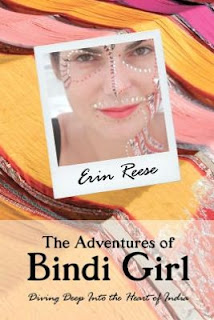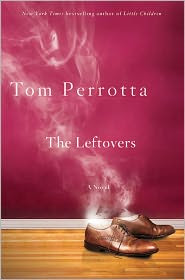 Peter Behrens is the author of The O'Briens and The Law of Dreams (which received Canada’s Governor General’s Literary Award for Fiction and was published around the world to wide acclaim) and Night Driving, a collection of short stories. His stories and essays have appeared in many publications, including The Atlantic and Tin House. Honors he has received include a Wallace Stegner Fellowship from Stanford University’s Creative Writing Program.
Peter Behrens is the author of The O'Briens and The Law of Dreams (which received Canada’s Governor General’s Literary Award for Fiction and was published around the world to wide acclaim) and Night Driving, a collection of short stories. His stories and essays have appeared in many publications, including The Atlantic and Tin House. Honors he has received include a Wallace Stegner Fellowship from Stanford University’s Creative Writing Program.Earlier this month I asked him what he was reading. His reply:
I spend winters in Marfa, Texas and while here have been digging into the history of the West. I'm reading a series of books about Western characters so draped in mythology that the real, historical people have almost disappeared. To Hell on a Fast Horse by Mark Lee Gardner is "the untold story" of Pat Garret and Billy the Kid. It's a good book because Gardner has done his research, knows the West, and places Billy in the context of hisVisit Peter Behrens's website.geography and his times. Billy is one of those figures who tremble on the cusp of our era: though he possesses undoubted talents (shooting, riding) he's very much a mass-media creation--the New York dailies loved him. He's kind of the Lady Gaga of his day. "Is there a there, there?" to Billy? Born in NYC he grew up in a series of raw one-horse mining and ranching towns in the West. He's illiterate, charming, buck-toothed, and mostly unknown. In his teenage years he's involved in gangstah-style activity in eastern New Mexico---The Lincoln County War---which is all about power, local politics, machismo, and (cattle) business. Billy is basically a gun for hire, a gangstah homeboy living on the edge between Victorian machine-age America and a much more ancient Old New Mexico; he shoots, he sings, he dies at twenty-one, and the señoritas love him. And this was the 1880s---not that long ago, only a few generations back, when the Territories of the American West much resembled, in their lawlessness, the "failed states" of northern Mexico today.
Jeff Guinn's book about Bonnie Parker and Clyde Barrow, Go Down Together, is a superb reconstruction of the lives and deaths of the two tiny Texas outlaws of the 1930s. As withBilly the Kid, media played a huge role in their careers, and that is why eighty years later we still remember them. Because Clyde never robbed anything much bigger than a gas station, and Bonnie probably never held a gun unless posing for a photograph. They both grew up in the hardest of times in the toughest of neighborhoods--Cement City, part of West Dallas. Guinn is superb at getting behind the myth and delivering a vivid picture of their (tough) lives and (hard) times. Except in Dallas, where the pair were folk heroes, or maybe urban legends, Bonnie & Clyde were mostly forgotten until Warren Beatty's 1967 movie. Guinn's book delivers a rich thick slice of American history at the dusty-street and dirt-road level.
Hampton Sides' book about the scout, trapper, Indian fighter, and soldier, Kit Carson, is called Blood and Thunder. It's a vivid portrait of another border man operating onthe narrow line between ancient and modern worlds; the West in the mid-nineteenth century is dashing toward the modern age but still dangling roots that had been sunk deep into much older ways of being. Sides' Kit Carson is a complex, mostly silent man: bold and brave, but one of history's followers, not leaders. But the history he walks & rides through is fearful, brilliant, and, once again, so near. Did all this really happen barely a century-and-a-half ago? How did we get from Kit Carson's New Mexico to strip malls in just two lifetimes?
The Page 69 Test: The Law of Dreams.
My Book, The Movie: The Law of Dreams.
--Marshal Zeringue


















































